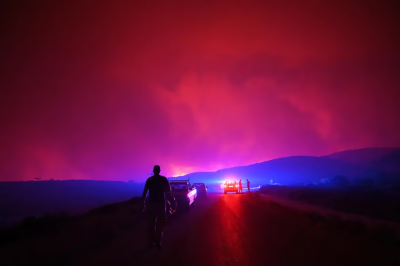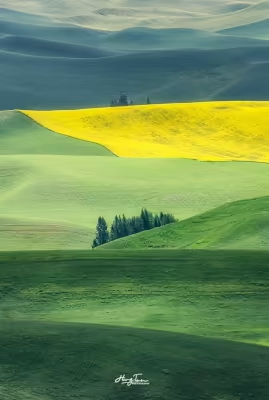Welcome to program 330 of Shortwave Radiogram.
This is Daz Man in Brisbane, Australia with a special EasyDRF Shortwave Radiogram!
Here is the lineup for today's program:
- Coffee Offers Performance Boost For Concrete
- Making Materials Tougher
- This week's images*
- Closing announcements
* with 10 image files
Please send reception reports and SNR Stats data to: radiogram@verizon.net
And visit: https://swradiogram.net
We're on Twitter now: https://twitter.com/SWRadiogram @SWRadiogram
From: RMIT News
Coffee Offers Performance Boost For Concrete
By: Will WrightAugust 23, 2023
Engineers in Australia have found a way of making stronger concrete with roasted used-coffee grounds, to give the drink-additive a “double shot” at life and reduce waste going to landfills.
Lead author Dr Rajeev Roychand from RMIT University said the team developed a technique to make concrete 30% stronger by turning waste coffee grounds into biochar, using a low-energy process without oxygen at 350 degrees Celsius.
“The disposal of organic waste poses an environmental challenge as it emits large amounts of greenhouse gases including methane and carbon dioxide, which contribute to climate change,” said Roychand, from the School of Engineering.
Australia generates 75 million kilograms of ground coffee waste every year – most of it goes to landfills. Globally, 10 billion kilograms of spent coffee is generated annually.
“The inspiration for our work was to find an innovative way of using the large amounts of coffee waste in construction projects rather than going to landfills – to give coffee a ‘double shot’ at life,” said Roychand, a Postdoctoral Research Fellow at RMIT.
“Several councils that are battling with the disposal of organic waste have shown interest in our work. They have already engaged us for their upcoming infrastructure projects incorporating pyrolysed forms of different organic wastes.”
Pyrolysis involves heating organic waste in the absence of oxygen.
Corresponding author and research team leader Professor Jie Li said the coffee biochar can replace a portion of the sand that was used to make concrete.
“The ongoing extraction of natural sand around the world – typically taken from river beds and banks – to meet the rapidly growing demands of the construction industry has a big impact on the environment,” Li said.
50 billion tonnes of natural sand are used in construction projects globally every year. “There are critical and long-lasting challenges in maintaining a sustainable supply of sand due to the finite nature of resources and the environmental impacts of sand mining,” Li said.
Co-researcher Dr Mohammad Saberian said the construction industry needed to explore alternative raw materials to ensure its sustainability.
“Our research team has gained extensive experience in developing highly optimised biochars from different organic wastes, including wood biochar, food-waste biochar, agricultural waste biochar, and municipal solid-waste biochar, for concrete applications,” Saberian said.
The researchers plan to develop practical implementation strategies and work towards field trials. The team is keen to collaborate with various industries to develop their research.
‘Transforming spent coffee grounds into a valuable resource for the enhancement of concrete strength’ is published in the Journal of Cleaner Production.
(DOI: 10.1016/j.jclepro.2023.138205).
Full story: https://www.rmit.edu.au/news/all-news/2023/aug/coffee-concrete
Please send reception reports and SNR Stats data to: radiogram@verizon.net
From: Duke Today
Making Materials Tougher
By: RA SmithJune 22, 2023
Research could pave the way to flexible-yet-durable materials that help cut down on microplastic pollution from things like the wear and tear of car tires.
Car tires are made of rubber but also plastic polymers and other materials. Tiny bits of these materials, most a fraction the size of a grain of sand, slough off whenever tires rub against the road. Some are washed into soils and waterways; others enter the air, where their long-term effects on the health of humans and other living things are unknown.
Duke chemistry professor Stephen Craig thinks we can do better. In a study published June 22 in the journal Science, he and colleagues describe a way to make rubbery materials an order of magnitude tougher, without compromising other aspects of their performance.
Craig is part of a team from Duke and MIT that has been studying the molecular reactions within a class of flexible polymer-based materials called elastomers. Think rubber tires, the nitrile in medical gloves, or the silicone in soft contact lenses. What makes these materials amazing is the fact that they can be stretched and squished repeatedly and still return to their original shape.
In their work, the researchers designed and synthesized two identical elastomers composed of polyacrylate, a rubbery polymer used to make things like hoses, seals and gaskets. Then in one of them, they replaced the cross-links with ones that were five times weaker, due to an embedded molecule that breaks apart under strain -- in this case a ring-shaped molecule called cyclobutane.
Everything else being equal, Craig said, you’d think that “linkers that break more easily should produce materials that are easier to tear”. But instead they found the opposite. “Surprisingly, the overall network got much stronger as opposed to weaker,” he added.
In mechanical tests, the researchers loaded thin sheets of each material into a machine that measures the force it takes to rip a sample. Both were similar in terms of stiffness and elasticity, but the one made with weak cross-linkers was up to nine times more difficult to tear than the one cross-linked with stronger bonds.
Typically, the polymer strands that span the leading edge of the tear must break for the crack to spread. But in their design the weak cross-links break first, leaving the main polymer thread uncinched but otherwise intact. This helps the material resist breaking down further, even once small nicks and blemishes start to form.
Previous studies estimate that, each year, tires release some 6 million metric tons of dust and debris worldwide, accounting for as much as 10% of the microplastics that end up in the oceans, and 3-7% of the particulate matter in the air we breathe.
“That’s just from tire tread wearing down on roads,” Craig said. “If you could reduce that by even 10%, that's still 600,000 tons of microplastics you'd be keeping out of the environment.”
This research was supported by the Center for the Chemistry of Molecularly Optimized Networks, or MONET, which is funded by the National Science Foundation (CHE-2116298).
Full story: https://today.duke.edu/2023/06/springy-yet-tough
Please send reception reports and SNR Stats data to: radiogram@verizon.net
This week's images
This week, we show a selection of the most colourful Shortwave Radiogram images from recent months:Firefighters and volunteers tackle a wildfire near the village of Palagia.
https://www.theguardian.com/news/gallery/2023/aug/22/wildfires-waves-and-womens-blind-football-tuesdays-best-photos

Visitors explore the Terceradix luminarium, an installation created by the arts organisation Architects of Air, in Falkirk, Scotland.
https://www.theguardian.com/news/gallery/2023/aug/06/kyiv-steeplejacks-surfing-dogs-the-weekends-best-photos-in-pictures

Plumeria (Frangipani), endemic to Mexico and Central America, was the subject of an international conference in September at the Los Angeles Arboretum.
https://twitter.com/LAArboretum/status/1694101793590890940

A vendor selling lights at a local market in Chennai, India.
https://www.theguardian.com/news/gallery/2023/jul/14/biodegradable-art-and-bastille-day-fridays-best-photos

A cedar waxwing perches on a leafy cotoneaster branch, clumps of bright-red berries hanging below.
https://www.theatlantic.com/photo/2023/06/2023-audubon-photography-awards-top-100/674554/

Steptoe Butte State Park, Colfax, Washington.
https://twitter.com/fraveris/status/1670118617092964352

The Strawberry Moon (in Flockton in West Yorkshire) marks the start of meteorological summer.
https://www.bbc.com/news/uk-england-leicestershire-65802574

Sandra McCruden snapped this beautiful sunset after the rain on Nairn East Beach.
https://www.bbc.com/news/uk-scotland-65888722

Sunset, as seen from 42nd street, New York.
https://www.theguardian.com/news/gallery/2023/may/30/protests-in-senegal-and-a-comic-con-dinosaur-tuesdays-best-photos

Jardin au soleil by Claude Simard, 2001.
https://twitter.com/CanadaPaintings/status/1284843180979097600/photo/1

Transmission of Shortwave Radiogram is provided by:
WRMI, Radio Miami International: 🌴 WRMI.net 🌴
and
WINB Shortwave: WINB.com
Please send reception reports and SNR Stats data to: radiogram@verizon.net
And visit: https://swradiogram.net
Twitter: https://twitter.com/SWRadiogram @SWRadiogram
Thanks for tuning in and decoding this special EasyDRF version of Shortwave Radiogram!
The usual MFSK program will be back next week...